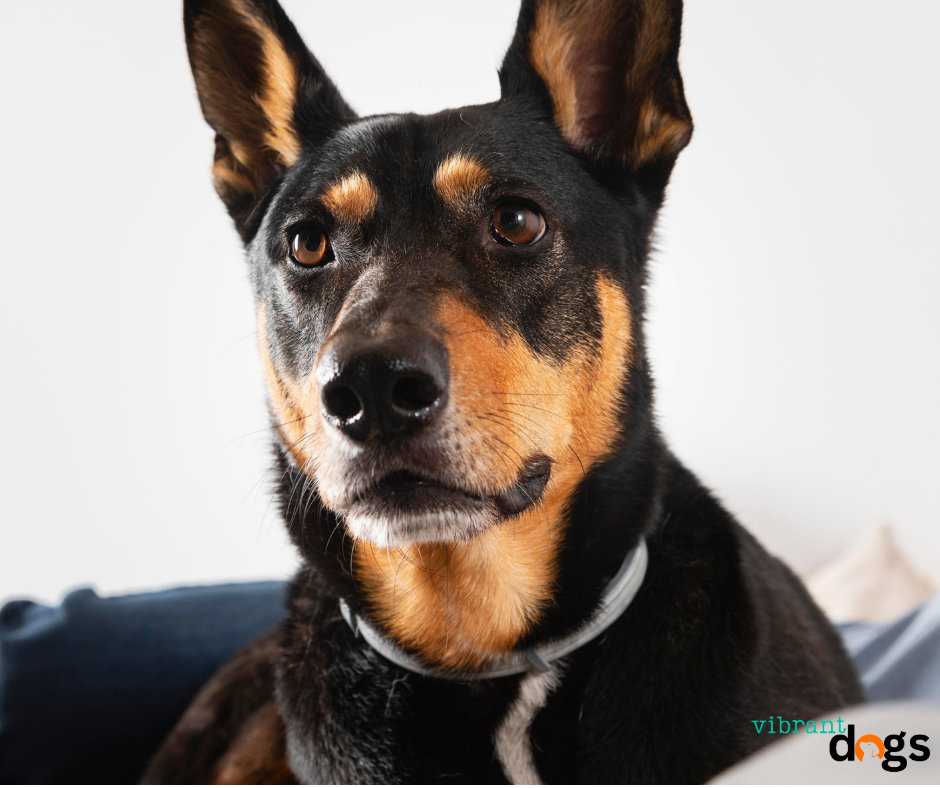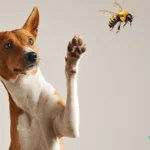Feist dogs, also known as Mountain Feists, are a fascinating breed. They have captured the hearts of many dog lovers in the United States. Their unique heritage, loving personalities, and hunting skills have made them special in American history.
This guide will explore their rich history, unique traits, and care needs. It aims to help you decide if a Feist is right for your family.
Key Takeaways
- Feist dogs have a rich history rooted in European working dogs and their evolution as hunting companions in the Southern United States.
- These energetic and intelligent canines excel at small-game hunting, making them highly sought-after by outdoor enthusiasts.
- Feists are known for their loyal and affectionate nature, thriving in active families who can provide them with ample physical and mental stimulation.
- Proper training, exercise, and grooming are essential for the well-being of these versatile and adaptable dogs.
- Feists are generally healthy, but it’s crucial to be aware of potential health concerns and provide them with a balanced diet and veterinary care.
Understanding the Mountain Feist: A Brief Introduction
The mountain feist is a special dog breed that’s popular in parts of the United States. It’s especially loved in the Appalachian Mountains. These dogs are full of energy and can handle tough terrains. They’re great at hunting, which makes them perfect for outdoor lovers and hunters.
The feist breed dog comes from working dogs in Europe. Over time, it adapted to the American South’s rough terrain. They’re small, standing 12 to 16 inches tall, but strong and agile. This helps them move through dense forests and steep hills.
Mountain feists have a short, smooth coat in various colors like black, white, tan, and brindle. They look amazing. Their sharp senses and quick movements make them excellent at hunting small animals like rabbits and squirrels.
But they’re more than just hunters. Mountain feists are also very loyal, smart, and loving. They do well in both country and city homes. They need lots of exercise, mental challenges, and love to be happy.
If you love the outdoors or just want a lively, loving pet, consider a mountain feist. Their unique history, looks, and skills will surely win over dog lovers and nature fans.
The Rich Heritage of Feist Dogs in American History
Feist dogs have a rich history that goes back to their European ancestors. These small, agile dogs have been key in the Southern United States’ hunting culture. They are great at tracking, flushing, and retrieving small game.
Origins in European Working Dogs
The feist dog breed comes from European working dogs like the Hanoverian Hound, Jagdterrier, and Rat Terrier. These tough, versatile dogs were brought to America by European settlers. They adapted well to the New World’s terrain and hunting ways.
Development in Southern United States
As the American frontier grew, feist dogs became very important for settlers and hunters in the South. These quick, determined dogs were great at chasing small game like rabbits and squirrels. They were also good at hunting larger animals like wild boar.
Evolution as Hunting Companions
Over time, feist dogs got better at being hunting companions. Their sharp senses, agility, and drive made them popular among hunters. They formed a strong bond with their owners, working together to track, flush, and retrieve game.
The history of feist dogs in America shows their lasting value and ability to adapt. From their European beginnings to their role in Southern hunting, these dogs have made a big impact on outdoor traditions.
Physical Characteristics and Breed Standards
Feist dogs, like the mountain feist, are known for their strong and compact build. They are small to medium in size, standing 12 to 18 inches tall and weighing 15 to 35 pounds. Their coats can be short and smooth or long and wiry.
Their coats come in many colors, including black, white, tan, brindle, and tri-color. Many feist dogs also have unique markings, like a white face or spots on their body.
| Physical Trait | Typical Characteristics |
|---|---|
| Height | 12 to 18 inches at the shoulder |
| Weight | 15 to 35 pounds |
| Coat Type | Smooth, short-haired or longer, wiry |
| Coat Colors | Black, white, tan, brindle, tri-color |
| Markings | White blaze, spots, or patches |
Even though the feist dog isn’t recognized by big kennel clubs like the AKC, there are local groups that have breed standards. These standards help keep the feist dog’s special looks and hunting spirit alive. They are a cherished part of American hunting traditions.
Temperament and Personality Traits of the Feist Dog
The feist breed dog is known for its captivating personality and great trainability. They are intelligent, enthusiastic, and loyal. These traits make them wonderful companions.
Intelligence and Training Capacity
The fiest dog is very smart and loves to learn. They need mental challenges and respond well to positive training. With patience and consistency, feist owners can teach them many skills and tricks.
Social Behavior with Family
Feist dogs are very loving and loyal to their families. They bond strongly with their owners and enjoy being around them. They are often called “velcro” dogs because they love to stay close and play.
Interaction with Other Pets
Feist dogs are usually friendly, but their high energy and prey drive can be a challenge. They may have trouble with smaller pets. But, with the right training and socialization, they can get along with other pets, like cats and small dogs.
| Trait | Description |
|---|---|
| Intelligence | High intelligence and eagerness to learn |
| Trainability | Responds well to positive reinforcement training |
| Family Affection | Highly devoted and affectionate towards family members |
| Pet Interactions | Can learn to coexist with other household pets with proper socialization |
“The feist dog is a versatile and intelligent breed that forms strong bonds with its human family. With the right training and socialization, these dogs can thrive in a variety of living situations.”
Training Requirements and Best Practices
Feist dogs are full of energy and smart. They need consistent, positive training to grow. Whether you’re new to Feist dogs or have experience, knowing their training needs is key. It helps build a strong bond and keeps them happy and healthy.
Establishing a Solid Foundation
Start training your Feist dog early and be patient. They love structure and routine. Begin with basic commands like sit, stay, and come. This will help with more advanced training later.
Positive Reinforcement Techniques
Feist dogs do best with positive rewards. Use treats, praise, or playtime to encourage good behavior. Harsh training can cause problems and hurt your bond with your Feist.
Overcoming Common Training Challenges
Feist dogs can be stubborn, making training tough. Stay consistent and patient, and give them lots of mental challenges. Socializing them early helps build confidence and adaptability.
Providing Enrichment Activities
Feist dogs need more than just basic training. Try agility, hide-and-seek, and scent work. These activities use their hunting instincts and keep them mentally sharp.
Follow these best practices to ensure your Feist dog is well-behaved and happy. With patience, positive reinforcement, and dedication to their training, you can unlock their full potential. These remarkable dogs will thank you.
Exercise Needs and Activity Recommendations
Feist dogs are full of energy and love to play. They need lots of exercise every day to be happy and healthy. It’s important to give them both physical and mental challenges to keep them well-rounded.
Daily Exercise Requirements
Feist dogs need 60 to 90 minutes of exercise daily. This can include walks, playtime in a yard, and sports like agility. Exercise keeps them fit and prevents bad behaviors.
Mental Stimulation Activities
- Puzzle toys and food-dispensing puzzles to challenge their problem-solving skills
- Scent work and nose games to engage their acute sense of smell
- Obedience training and trick-learning to keep their minds sharp
Outdoor Adventures
Feist dogs love the outdoors because they come from a line of hunting dogs. They enjoy hikes, camping, and exploring new places. These activities are great for their energy and curiosity.
Make sure your feist dog gets enough exercise and mental challenges. This will help them be their best selves. Tailoring their activities to their needs keeps them happy and healthy.
| Exercise Requirement | Duration |
|---|---|
| Daily Exercise | 60-90 minutes |
| Mental Stimulation Activities | Varies, multiple times per day |
| Outdoor Adventures | Regularly scheduled |
Health Considerations and Common Medical Issues
Mountain feist dogs and fiest dogs can face health issues like any other breed. Knowing about these problems is key to caring for your pet and keeping them healthy.
Joint problems, such as hip and elbow dysplasia, are common. These issues can cause pain and make it hard for your dog to move. Regular vet visits, keeping your dog at a healthy weight, and proper exercise can help prevent these problems.
Eye issues, like progressive retinal atrophy (PRA) and cataracts, are also a concern. These can slowly damage your dog’s vision. It’s important to have your dog’s eyes checked by a vet ophthalmologist often.
| Common Health Concerns for Mountain Feist Dogs and Fiest Dogs | Preventive Measures |
|---|---|
| Joint Problems (Hip and Elbow Dysplasia) |
- Regular veterinary check-ups
- Maintaining a healthy weight
- Appropriate exercise
| Eye Problems (Progressive Retinal Atrophy, Cataracts) |
- Periodic eye examinations by a veterinary ophthalmologist
| Allergies and Skin Conditions |
- Identifying and avoiding triggers
- Proper grooming and bathing
- Veterinary-recommended treatments
Mountain feist dogs and fiest dogs can also have allergies and skin problems. These can make them itchy and uncomfortable. By finding and avoiding triggers, grooming them right, and using vet-approved treatments, you can help manage these issues.
It’s crucial to take your dog to the vet regularly, prevent health problems, and watch their health closely. Being proactive and addressing health issues quickly can help your dog live a long, happy life.
Nutrition and Dietary Requirements
Feist breed dogs need the right food to stay healthy and happy. They are active and need a diet that matches their energy. Let’s explore the best foods, feeding times, and any special needs for your feist dog.
Recommended Food Types for Feist Dogs
Feist dogs love a diet rich in protein. Choose dog foods with lean meats like chicken, turkey, or fish. Stay away from fillers and by-products. Instead, pick foods low in carbs and high in healthy fats.
Adding fresh fruits and veggies can boost their nutrition and fiber intake.
Feeding Schedule for Feist Dogs
- Feist dogs do well with a regular feeding schedule, two to three times a day.
- The right amount of food depends on their age, how active they are, and their health. A good rule of thumb is 25-30 calories per pound of body weight per day.
- Make sure they always have fresh, clean water. Watch their water intake to keep them hydrated.
Special Dietary Needs for Feist Dogs
Some feist dogs might need special diets based on their age, activity level, or health. Puppies and older dogs might need specific formulas for their life stage. Active feist dogs might need more calories and protein to keep up with their energy.
Talk to your vet to create a diet plan that fits your feist dog’s needs.
| Nutrient | Recommended Amount for Feist Dogs |
|---|---|
| Protein | 22-32% of total caloric intake |
| Fat | 12-18% of total caloric intake |
| Carbohydrates | 30-40% of total caloric intake |
Feeding your feist breed dog a balanced diet supports their health, energy, and long life. Always get advice from your vet on what’s best for your feist dog’s diet.
Grooming and Maintenance Tips
Keeping your dog mountain feist or feist dog healthy and looking good needs regular grooming. Start by brushing their coat often. This removes loose hair and spreads natural oils, keeping their fur clean and healthy.
Trimming their nails every few weeks is also important. It prevents discomfort and keeps their paws in the right position.
Dental care is key for your feist dog’s health. Brushing their teeth regularly or giving them dental chews can stop plaque and gum disease. Also, bathing them as needed but not too often keeps their skin and coat in top shape.
Grooming is more than just making them look good. It’s vital for their happiness, health, and comfort. Spend time each week on grooming and maintenance. You’ll get a well-groomed, well-cared-for friend.




